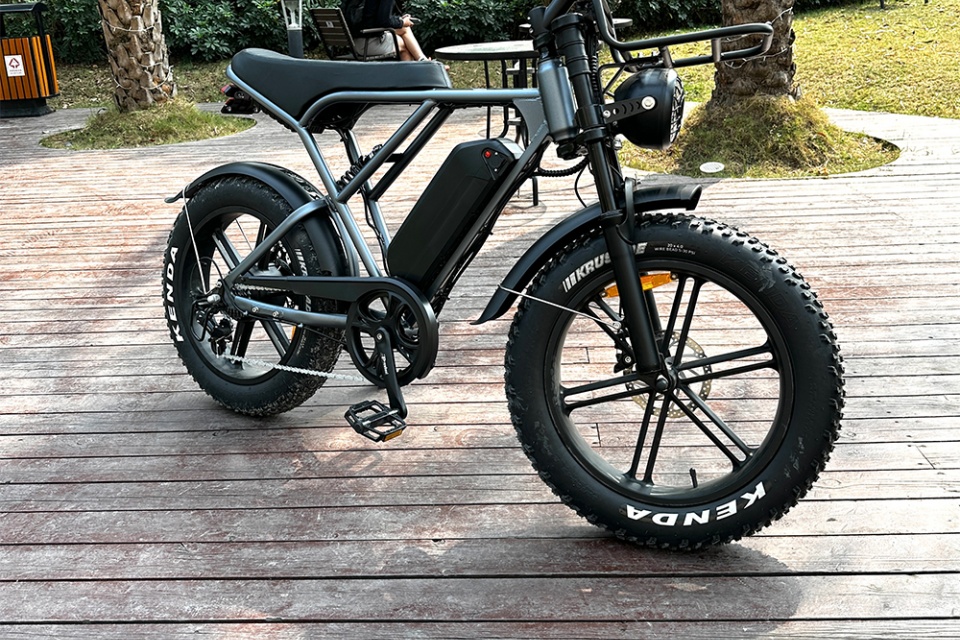-
414 Block B, ZT Times Plaza, Wuhan, Hubei, China
Blog
Quality Control in Bulk Orders – What Buyers Should Know
Summary
Quality control in bulk orders refers to the systematic processes and methodologies employed to ensure that products meet specified quality standards during large-scale procurement. This topic is particularly significant for businesses that depend on consistent quality in their products, as bulk orders often represent substantial financial investments and directly impact customer satisfaction. Effective quality control practices can mitigate risks associated with product defects, compliance issues, and supply chain disruptions, thereby protecting a company’s reputation and enhancing market competitiveness.
Notable techniques within quality control for bulk orders include statistical quality control, acceptance sampling, and process control, each designed to monitor and manage the production process. Statistical quality control, for instance, utilizes data-driven methods to identify variations and trends, enabling proactive adjustments to manufacturing processes. Meanwhile, acceptance sampling allows for testing a sample of products to determine if a larger batch meets quality standards, significantly reducing inspection costs while maintaining product integrity. The application of these techniques is vital across various industries, including manufacturing, food production, and pharmaceuticals, where the consequences of quality failures can be severe.
However, quality control in bulk orders is not without challenges. Issues such as supplier capacity limitations, unclear product specifications, and budget constraints can complicate the procurement process. Additionally, maintaining strong communication with suppliers is crucial, as operational disruptions on their end can adversely affect product quality and delivery timelines. Addressing these challenges through rigorous inspection processes, regular supplier audits, and effective training can help ensure that bulk orders consistently meet quality expectations.
In summary, quality control in bulk orders plays a pivotal role in safeguarding product quality and operational efficiency, which are essential for fostering customer loyalty and driving business success. By understanding the various methodologies and addressing potential challenges, buyers can enhance their quality assurance practices and achieve more favorable outcomes in their bulk purchasing endeavors.
Types of Quality Control
Quality control (QC) encompasses a variety of methods and techniques that ensure products meet specified quality standards throughout the manufacturing process. Understanding the different types of quality control is essential for buyers, particularly when dealing with bulk orders, as these methods can significantly influence product quality and reliability.
Statistical Quality Control
Statistical quality control (SQC) utilizes statistical methods to monitor and control manufacturing processes. It helps in identifying defects and minimizing variations, which can significantly affect product quality. Common SQC techniques include control charts, which visually depict whether production processes are maintaining the desired quality levels. SQC is particularly beneficial in identifying trends over time, allowing for proactive adjustments to manufacturing processes to enhance overall quality.
Product Quality Control
Product quality control focuses on inspecting finished products to confirm they meet quality specifications. This involves testing, examining, and evaluating products post-production to identify any defects before they reach consumers. This type of QC is crucial in sectors such as manufacturing and food production, where high-quality standards are paramount to maintaining customer satisfaction and compliance with industry regulations.
Process Control
Process control involves monitoring the manufacturing processes to ensure that they operate within predefined parameters. Batch Process Control: This technique involves mixing specific quantities of raw materials for a set period to achieve a desired product outcome. It is commonly used in situations where the production runs are discrete and easily measurable. Continuous Process Control: In this approach, the process variables remain constant to optimize production efficiency. This method is employed to achieve the best economic outcomes and maximum flow rates in continuous production settings. Hybrid Process Control: This method combines elements from both batch and continuous process control, allowing for flexibility depending on the production needs and requirements.
Acceptance Sampling
Acceptance sampling is a statistical quality control method where a sample of products is tested to determine whether a batch meets quality standards. This method helps to detect variations caused by unforeseen factors, allowing businesses to address quality issues without testing every single product. By establishing acceptable quality limits (AQL), companies can efficiently determine the maximum number of defects permissible in a batch.
Quality Inspection Methods
Quality inspection plays a vital role in quality control, involving various methods to detect defects and ensure compliance with standards: Visual Inspection: Inspectors visually examine products for obvious defects or discrepancies. Dimensional Measurements: This involves using tools to measure physical attributes of products, ensuring they conform to specifications. Functional Testing: Products are tested under conditions that simulate real-world use to verify their performance and safety. Non-Destructive Testing: This technique evaluates materials and components without causing damage, crucial for high-value or critical products. Once inspections are completed, findings are documented in reports that highlight any quality gaps, leading to corrective actions to enhance future production quality.
By employing a combination of these quality control types, businesses can significantly improve product quality, foster customer loyalty, and enhance their market position.

Quality Control Processes
Quality control processes are critical in ensuring that products meet established standards, particularly when dealing with bulk orders. These processes encompass various methodologies designed to maintain product integrity and customer satisfaction throughout the production and procurement stages.
Overview of Quality Control in Bulk Orders
Quality control in bulk orders begins with a detailed procurement plan that guides the entire materials procurement process. This plan includes strategies for efficient acquisition while meeting quality standards. A robust quality control plan involves the inspection and testing of materials upon receipt to verify compliance with technical specifications outlined in purchase orders. Such inspections may include physical, chemical, and mechanical tests to ensure the materials possess the necessary properties for intended use.
Types of Quality Control Techniques
Several quality control techniques are employed to enhance product quality:
Process Control
Process control involves monitoring and managing manufacturing processes to ensure consistent output quality. This technique helps identify variations that may affect product integrity.
Acceptance Sampling
Acceptance sampling is a method where a random sample of products is tested to determine if the batch meets quality standards. This method is especially useful in bulk orders to minimize inspection costs while ensuring quality.
Control Charts
Control charts are utilized to track process performance over time, identifying trends or deviations that require corrective actions. This technique is essential for continuous improvement and maintaining standards.
Product Quality Control
Product quality control involves direct inspection of finished products to ensure they meet specified quality criteria. This is crucial in industries like manufacturing and food production, where consumer safety and satisfaction are paramount.
Continuous Improvement Strategies
Implementing continuous improvement strategies is essential for maintaining high-quality standards in bulk orders. Regular inspections and audits should be conducted to identify deviations from established quality benchmarks and facilitate corrective actions. Moreover, gathering feedback from customers provides valuable insights into areas for improvement, helping companies to adjust their processes accordingly.
By establishing clear quality standards and consistently communicating them to suppliers and manufacturers, businesses can ensure a unified understanding of product expectations across the supply chain. Additionally, integrating data analysis tools can enhance decision-making in quality assurance, allowing businesses to anticipate and mitigate risks effectively.
Importance of Employee Training
Effective quality control processes hinge on well-trained employees. Regular training sessions ensure that workers understand quality control procedures, safety standards, and the proper use of equipment. A knowledgeable workforce can identify issues early, reducing defects and enhancing product quality throughout the supply chain.
By employing these quality control processes, companies can not only protect their reputation but also improve customer loyalty and maintain a competitive edge in the marketplace.

Quality Control Tools and Techniques
Quality control in bulk orders is essential for ensuring that products meet the required specifications and maintain high standards throughout the manufacturing process. To achieve effective quality control, various tools and techniques are employed.
Key Quality Control Techniques
Statistical Process Control (SPC)
Statistical Process Control (SPC) is a widely used technique that employs statistical methods to monitor and control manufacturing processes. By analyzing variations in process data, SPC enables the identification of trends or issues that could lead to defects. Control charts are a crucial element of SPC, allowing operators to visualize process behavior over time and make necessary adjustments in real-time to maintain consistent quality.
Inspection Methods
Quality inspection is a fundamental aspect of quality control, involving the examination of products for defects or deviations from specifications. This process can be performed manually or through automated systems. Various types of inspection include visual inspection, which identifies obvious defects, and dimensional inspection, which verifies that physical attributes conform to design requirements. Additionally, functional testing assesses whether the product operates as intended. Implementing effective inspection methods ensures that products meet established quality standards before reaching consumers.
Quality Control Checklists
Quality control checklists play a critical role in maintaining consistency during the monitoring of production parameters. These checklists guide operators through essential quality checks, covering aspects such as pre-production setup, in-process quality checks, equipment calibration, product specification compliance, and necessary documentation. By using checklists, organizations can standardize their quality control processes and enhance reporting consistency.
Continuous Quality Improvement Strategies
To maintain and enhance product quality, manufacturing facilities must implement ongoing improvement strategies. These strategies help identify opportunities for quality enhancement and include methods such as regular process audits, employee suggestion programs, quality circles, Kaizen events, and performance reviews. By fostering a culture of continuous improvement, companies can optimize their quality control processes and respond more effectively to quality challenges.
Integration of Quality Control Methods
Modern manufacturing facilities often adopt an integrated approach by combining various quality control methods to form robust quality management systems. This integration allows manufacturers to leverage the strengths of each methodology while addressing specific production challenges. Key success factors for effective integration include clear alignment with business objectives, strong leadership support, employee training, regular assessment, and the use of technology to enable quality control efforts.
Statistical Tools for Quality Control
Statistical tools are foundational to effective quality control in manufacturing. They enable quality teams to analyze data, identify trends, and make informed decisions regarding process improvements. Important statistical tools include control charts for monitoring process stability, histograms for displaying data distribution, and Pareto analysis for identifying significant factors affecting quality issues. These tools help maintain statistical control and document quality improvements throughout the production cycle.

Challenges in Quality Control for Bulk Orders
Quality control in bulk orders presents several challenges that can impact product integrity, supplier relationships, and overall operational efficiency. Addressing these challenges requires a strategic approach and proactive measures.
Quality Compromise
One of the primary challenges in bulk orders is the potential compromise on quality. Buyers often focus heavily on quantity, which can lead to neglecting quality control measures. This oversight can harm the brand’s reputation if subpar products reach consumers. It is essential to integrate quality checks into the procurement process and implement robust quality assurance procedures at various stages of order fulfillment to mitigate this risk.
Supplier Capacity Limitations
Another significant challenge is ensuring that suppliers can handle large orders without affecting quality or delivery timelines. Overestimating supplier capabilities can lead to delays and unmet expectations, causing disruptions in the supply chain. Therefore, it is crucial for buyers to confirm supplier capacity and scalability before committing to bulk purchases.
Importance of Detailed Specifications
The lack of detailed specifications in bulk orders can result in errors and dissatisfaction. Vague instructions may lead to misunderstandings regarding product design, branding, or necessary customization. To prevent such issues, it is vital to provide comprehensive and specific details in order documentation.
Budget Constraints
Budget management poses another challenge when handling bulk orders. Unexpected costs may arise during the purchasing process, potentially leading to budget overruns. Buyers must monitor expenses carefully and track spending against the budget to ensure they achieve their purchasing objectives without financial pitfalls.
Tracking and Reporting Errors
Effective error tracking is essential for maintaining quality in bulk orders. Establishing a systematic approach for reporting and recording past mistakes can help businesses identify trends and target areas that require special attention. This data is valuable for enhancing future orders and quality control processes.
Supplier Communication
Reliable communication with suppliers is crucial for maintaining product quality. Operational or financial issues on the supplier’s end can severely impact the wholesaler’s ability to fulfill orders. Establishing strong relationships and maintaining open lines of communication are vital to mitigating these risks and ensuring a positive customer experience.
Storage and Distribution Management
Proper storage and distribution are necessary to manage bulk orders effectively. Inadequate storage can lead to overstocking, wastage, and spoilage, while inefficient distribution can disrupt supply chains. Planning for adequate storage facilities and developing efficient distribution strategies can help mitigate these logistical challenges.
By recognizing and addressing these challenges, businesses can enhance their quality control practices for bulk orders, ensuring product consistency and customer satisfaction.
Strategies to Overcome Challenges
Quality control in bulk orders often presents numerous challenges that can impact overall procurement efficiency and supplier relationships. To effectively navigate these obstacles, buyers should adopt several strategic approaches.
Implement Rigorous Inspection Processes
One of the foremost strategies is to implement comprehensive inspection protocols throughout the production and delivery phases. Various inspection methods such as visual inspection, measurement testing, and functional testing should be employed to identify defects early in the process. Moreover, piece-by-piece inspections are advisable for high-value goods or those requiring strict compliance with specifications, ensuring that all items meet quality standards before shipment. By establishing these rigorous inspection processes, buyers can significantly reduce the risk of receiving subpar products.
Foster Strong Supplier Relationships
Building strong, collaborative relationships with suppliers is crucial for effective quality management. Effective communication is essential when addressing quality issues; buyers should clearly describe problems and work with suppliers to develop corrective action plans. This cooperative approach not only helps resolve immediate issues but also fosters a culture of continuous improvement, which can enhance overall product quality over time.
Conduct Regular Supplier Audits
Regular supplier audits are another vital strategy for maintaining quality standards. These audits enable buyers to gain insights into suppliers’ quality management systems and manufacturing processes, thereby identifying any weaknesses that may lead to recurring quality issues. By performing these audits consistently, buyers can address potential problems proactively, ensuring that suppliers adhere to agreed-upon quality standards.
Invest in Training and Development
Investing in training for both internal teams and suppliers is imperative for improving quality control measures. Inadequate training can lead to errors and quality lapses; thus, enhancing the skills and knowledge of personnel involved in the procurement process can mitigate these risks. Furthermore, providing suppliers with the necessary resources and training to meet quality expectations reinforces the importance of quality standards.
Leverage Data-Driven Decision Making
Data-driven decision-making is essential for addressing quality control challenges effectively. By utilizing data analytics, buyers can gain insights into trends and patterns related to defects and quality issues, allowing for informed decisions that enhance procurement strategies. This analytical approach not only facilitates better quality management but also drives efficiencies and cost savings across the procurement process.
By incorporating these strategies, buyers can overcome common challenges associated with quality control in bulk orders, ensuring the delivery of high-quality products and maintaining robust supplier relationships.
Best Practices for Buyers
Ensuring product quality in bulk purchases is critical for maintaining business reputation and customer satisfaction. Adopting effective strategies can significantly mitigate risks associated with bulk buying.
Understanding Market Trends
Plan Purchases Around Market Cycles
Buyers should align their bulk purchasing decisions with anticipated market trends, such as buying in advance of expected price increases or stock shortages. This requires a solid understanding of market cycles and seasonal fluctuations, enabling businesses to make informed purchasing decisions.
Implement Flexible Ordering Policies
Developing flexible ordering policies that allow adjustments in order sizes and timing based on real-time market data is essential. This adaptability helps businesses respond swiftly to changing market conditions, optimizing their purchasing strategy to better meet demand.
Supplier Management
Conduct Thorough Supplier Evaluations
Conducting comprehensive evaluations of suppliers is vital. This involves assessing their production standards, adherence to delivery schedules, and overall quality control processes. Buyers should focus on suppliers with proven histories of delivering high-quality products and robust manufacturing practices.
Enhance Supplier Relationships
Fostering strong relationships with suppliers is crucial for ongoing quality assurance. Providing constructive feedback and addressing any identified issues can lead to more collaborative partnerships that enhance product quality.
Regular Supplier Audits
Conducting regular audits of suppliers helps identify and resolve recurring quality issues. These audits provide insights into suppliers’ quality management systems and manufacturing processes, allowing buyers to spot weaknesses early and reduce the likelihood of receiving defective products.
Quality Control Procedures
Set Clear Quality Standards
Establishing specific quality standards is essential for evaluating products consistently. By clearly defining acceptable characteristics and performance metrics, buyers can ensure that suppliers meet the required quality levels.
Monitor Supplier Performance
Implementing a robust monitoring system to track supplier performance against established quality metrics is necessary. This ongoing evaluation helps identify areas for improvement and ensures that suppliers consistently meet product specifications.
Utilize Advanced Technology
Leveraging technology and data analysis can enhance quality control processes. Regular inspections, testing, and the establishment of documentation procedures contribute to maintaining high product standards throughout the supply chain. By adhering to these best practices, buyers can significantly improve the quality of bulk purchases, leading to greater operational efficiency and customer satisfaction.
Industry-Specific Quality Control Practices
Quality control (QC) practices vary significantly across different industries, each employing tailored methods to ensure that products meet strict safety and quality standards. Understanding these industry-specific QC practices is essential for buyers to ensure they receive high-quality goods.
Manufacturing Industry
In the manufacturing sector, quality control is integral to maintaining product consistency and safety. The process typically includes rigorous inspections at multiple stages of production to detect and correct defects before products reach consumers. Manufacturers often establish clear guidelines defining acceptable quality, implement testing protocols, and routinely review inspection data to identify trends and potential issues. For instance, in aircraft manufacturing, every item and phase of production is meticulously documented and inspected to guarantee compliance with stringent safety standards. This comprehensive approach is essential not only for customer satisfaction but also for regulatory compliance in competitive markets.
Food and Beverage Industry
Quality control is critical in the food and beverage sector, where safety and quality directly impact consumer health and satisfaction. QC teams conduct multiple tests throughout the production process to ensure that products meet specified nutritional values and safety standards. For example, methods such as the Atwater system are used to calculate the nutritional components of beverages, ensuring accuracy in labeling and ingredient quality. Any deviations, such as excess sugar in a beverage, trigger immediate reviews and adjustments to maintain quality standards. Furthermore, practices like the FIFO (First In, First Out) method help manage inventory effectively, minimizing waste and ensuring product freshness.
Pharmaceutical Industry
In the pharmaceutical industry, quality control involves stringent tracking and tracing of product movements to uphold safety and compliance with regulatory standards. For instance, the Drug Supply Chain Security Act (DSCSA) mandates the traceability of prescription drugs to prevent counterfeit or harmful products from reaching consumers. Organizations in this sector employ advanced technologies to manage serialization and maintain comprehensive documentation, ensuring high levels of quality control throughout the supply chain.
Automotive Industry
The automotive industry places a strong emphasis on safety through meticulous inspection techniques. Quality control inspectors evaluate parts and assemblies using both visual and measurement inspections to catch potential issues before vehicles are released to consumers. This proactive approach not only enhances safety but also bolsters brand reputation and efficiency, as maintaining high-quality standards is crucial in an industry where consumer safety is paramount.
By adopting these industry-specific quality control practices, companies can enhance product quality, ensure compliance with regulations, and foster customer loyalty, making QC a vital aspect of operational success across various sectors.
Case Studies
Overview of Quality Control in Bulk Orders
Quality control plays a pivotal role in ensuring that bulk orders meet the expected standards and specifications. This section explores various case studies highlighting effective quality control practices across different industries, illustrating their impact on product quality and overall customer satisfaction.
Manufacturing Sector Case Study
In the manufacturing sector, a company implementing a Design of Experiments (DOE) approach discovered significant improvements in product quality. By systematically testing multiple variables during the production process, the company identified optimal settings that minimized defects. This structured technique not only reduced the rate of defective products but also enhanced efficiency, leading to increased customer loyalty and fewer returns.
Food Production Case Study
A food production facility faced challenges with maintaining consistent quality across its bulk orders. By adopting Root Cause Analysis (RCA), the team investigated the underlying issues contributing to quality deviations. Through the use of techniques such as the “5 Whys” and Fishbone diagrams, they identified critical points in the production process where lapses occurred. Implementing corrective measures resulted in a substantial reduction in customer complaints and increased compliance with food safety standards.
Technology Sector Case Study
In the high-tech industry, a company specializing in electronics faced significant product recalls due to defects in bulk orders. To address this, they established rigorous quality protocols and documentation processes. By ensuring that every aspect of production was meticulously documented and that staff were adequately trained, the company was able to significantly decrease the incidence of defects and enhance overall product reliability. This proactive approach led to improved market reputation and reduced costs associated with product recalls.
Retail Case Study
A retail company utilized statistical sampling techniques to evaluate customer satisfaction regarding bulk orders. By selecting a representative sample of customers and gathering feedback, they were able to identify trends and areas for improvement. Although the initial sample selection presented challenges, the insights gained enabled the company to make informed adjustments to its inventory and product offerings, ultimately resulting in higher customer satisfaction and increased sales.










